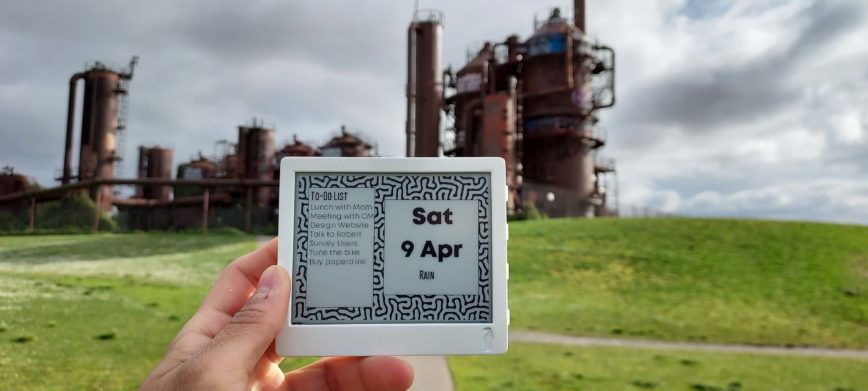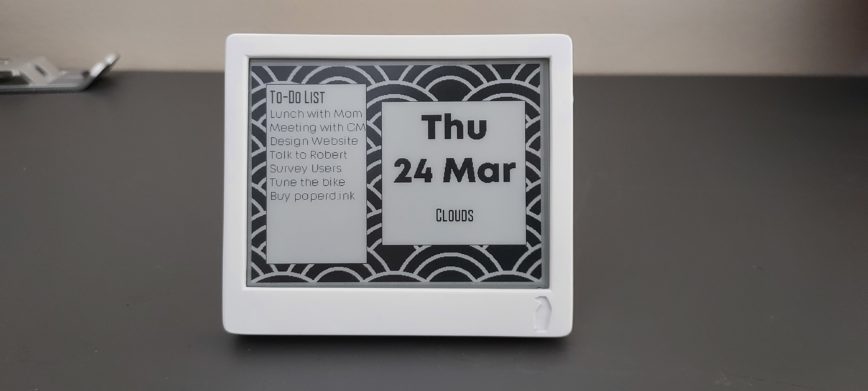Why we built paperd.ink even after crowdfunding failed
Paperd.ink started as a hobby project from our rooms when we had just graduated our college. Both Rohit & I studied Electronics & Telecommunications engineering for our Bachelor’s. Rohit is the technical brain and creator of the product, whereas I am responsible for promotion, operations, user research, etc. This blog will briefly cover our journey so far; I hope you find it worth your time!
Table of Contents
Why we created paperd.ink

The need for paperd.ink arose from the lack of good e-paper development boards. While you could hack a Kindle or Onyx ebook reader, a simple Arduino-like programming board would’ve made life much more joyful.
Also, e-paper displays are gorgeous. The high contrast with no glare enables you to read effortlessly in outside settings (also why it is used in ebook readers). E-paper displays are also power-efficient; they don’t need power once the contents are displayed on the screen. So, depending on the number of times you refresh the screen, it can go as long as six months to a year on a single battery charge.
While Kindles and other ebook readers use touch screen e-paper displays, we didn’t want to do something like that for several reasons. First, they have a high refresh rate which creates latency in response – imagine touching a button on the screen and it opens after a delay of one second. That user experience wasn’t something we wanted. Secondly, those displays are expensive and we were just starting out, so it didn’t make sense to go for them.
It’s always a chicken and egg problem in manufacturing – you can’t make something profitably if the quantity is too small and you can’t get high quantities if the price is not apt. While these were the initial problems we faced after creating the prototype, we decided to move forward with the only way we saw – crowdfunding.
Paperd.ink crowdfunding
We launched our crowdfunding campaign in late May 2021 and tried to get us backers for at least 300 units. This was the number where we could produce paperd.ink units and not run into losses. The idea was the ship the first product, get feedback from early users and then move forward from there.
While we did get a decent response for paperd.ink, we fell short of reaching our goal. However, during the campaign, I would regularly cold email “big” people I thought would be interested in paperd.ink and hoped they would spread the word with their network. And I did get a lot of wonderful responses. Luckily, one of them decided to support us!
Our first batch sold rapidly and as of writing this, 550+ users signed up for the next batch.
Kailash Nadh, the CTO of Zerodha (one of India’s largest stock brokerage firms), happily offered us a grant via FOSS United, a non-profit foundation promoting Free and Open Source Software (FOSS) ecosystem in India. We decided to take the funding which would enable us to live to fight for another day.
Manufacturing paperd.ink

We tested more screen prototypes and designs and decided to finally produce the first batch of paperd.ink. Negotiations started, suppliers, manufacturers, logistics identified, and timelines scheduled. We then calculated unit economics amidst the ever-going unstable market conditions (war, pandemic, supply chain shortages, etc.), shared documentation and thus production started.
Our being bootstrapped and low quantity production meant we had to have certain trade-offs (like 3D printing the body instead of using some industry-grade method), but we kept the core product as we wanted. This can be analogous to the concept of MVP.
Ultimately, we launched on the 1st of May 2022, when we had about 115 units in our inventory. And boy, did these babies sell themselves! We sold out the first batch rapidly and, as of writing this, have 550+ users signed up, waiting for the next batch update. Most of the units have been delivered to users and we have gotten messages, mostly positive and the remaining are about doubts and troubleshooting.
The future of paperd.ink
The way forward would be to talk with the users, get feedback and then work on the 2nd generation of the product. This wouldn’t have been possible without my partner CTO Rohit Gujrathi; friends like Adesh Chopade, Aravind Ravi, Saumitra Joshi, Kailsh Nadh, FOSS United, all the blogs who covered us and of course, our early backers and users for whom everything is being done. Stay tuned; we have a couple of exciting ideas to work on for the next products, can’t wait to share them with you all!
Home: https://paperd.ink/
Docs: 1. Getting Started | paperd.ink
GitHub: paperd.ink · GitHub
Hackaday: paperd.ink | Hackaday.io
Twitter: https://twitter.com/paperddotink
Instagram: https://www.instagram.com/paperd.ink/
HN: Show HN: Paperd.ink – an open-source e-paper development board | Hacker News
Latest Press: The Paperd.ink Smart ePaper Display Starts Shipping — Thanks to FOSS United Grant Funding - Hackster.io